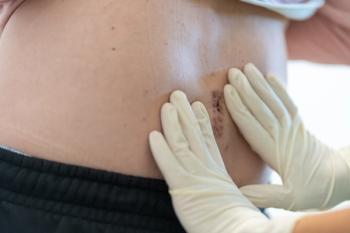
Current Challenges in Wound Care
An article in the Plastic and Reconstructive Surgery journal investigates chronic wound care and the latest news in healing better and faster.
An article published in the Plastic Reconstructive Surgery journal investigated wound care and the challenges that come with it.1
Chronic wound care is a wound that persists after 4-6 weeks, and a complex wound is one that a health care professional is the one who needs to take care of it. The lack of progression and the complex nature of the wounds are due to multiple reasons and can be explained by the following factors1:
- patient-related factors (lack of assessment of comorbidities or factors contributing to the wound, and difficulties related to the patient’s behavior and cooperation);
- factors related to the wound (surface, volume, damage to the noble tissues, misdiagnosis of the etiology of the wound, and lack of diagnosis of infectious or ischemic complications of the wound);
- factors related to the skills and knowledge of health professionals (absence of standardized or appropriate care protocols);
- factors related to environmental or social difficulties in terms of resources available for the treatment of the wound.
So, what is the exact role and clinical signs of surgery in debridement and coverage?
Chronic wounds like pressure ulcers and deep sternal wound infections are usually reconstructed using local flaps because the patients are associated with a poor condition in general and it is relatively easy, according to the study authors.
The main strategy is debriding the wound and then covering the wound immediately, the authors said, which is good for trauma wounds, but less successful for large pressure ulcers as the failure rate of the flaps could reach 50%. Negative pressure wound therapy (NPWT) was much more effective. There is a way to use microsurgery to heal wounds by transferring larger pieces of tissues to cover large skin surface, but its use can be limited.
NPWT can be used to manage surgical wounds that are at risk for infection and randomized control trials showed the interest of NPWT in both preparing the wound for closure and promoting granulation tissue formation in the diabetic foot.1
NPWT can also be used to instill wounds with liquids like saline, topical antiseptics, topical antibiotics in extreme situations, but there have been no studies directly comparing NPWT to NPWT with instilled liquids. Recently, NPWT both ways were found to improve wound bed preparation, delaying and simplifying the surgical closure.
Regarding trauma, the pressure ulcer management plan has changed to a 2-stage reconstruction using NPWT which causes the free flap to be less likely lost and safely performed compared to the older method.
The combination of vascular intervention surgery and free tissue transfer for critical limb ischemia salvage is sometimes performed, but this method is not always successful. A free flap has a different role is free tissue transfer when treating the tissue loss of a critical limb ischemia and is a nutrient flap instead to help supply blood to the wound. This can help the healing process.
Ulcers that do not heal after radiation therapy can be healed, but it is harder due to the irradiated tissue around the tissue. So, the healthy tissue is then surgically excised and used as a free flap transfer to help the wound heal.
“The development of NPWT brought about the transformation of the reconstructive ladder and it has changed the strategy of wound care and wound closure for the treatment of chronic and complex wounds,” authors wrote. “It has greatly contributed to reducing the risk of microsurgery failure and proposes an alternative to microsurgery, when microsurgery is contraindicated.”
Reference:
1. Teot L, Ohura N. Challenges and management in wound care. Plast Reconstr Surg. 2021;147(1S-1):9S-15S. doi:10.1097/PRS.0000000000007628
Newsletter
Like what you’re reading? Subscribe to Dermatology Times for weekly updates on therapies, innovations, and real-world practice tips.

















